

|
The Kartvelologist The Kartvelologist” is a bilingual (Georgian and English) peer-reviewed, academic journal, covering all spheres of Kartvelological scholarship. Along with introducing scholarly novelties in Georgian Studies, it aims at popularization of essays of Georgian researchers on the international level and diffusion of foreign Kartvelological scholarship in Georgian scholarly circles. “The Kartvelologist” issues both in printed and electronic form. In 1993-2009 it came out only in printed form (#1-15). The publisher is the “Centre for Kartvelian Studies” (TSU), financially supported by the “Fund of the Kartvelological School”. In 2011-2013 the journal is financed by Shota Rustaveli National Science Foundation. |
Anthony Bryer Obituary
If Britain today provides a flourishing base from which to study Byzantium, the eastern Roman Christian empire that flowered between 330 and 1453, Anthony Bryer, who has died aged 78, is the individual responsible. He was an inspiring teacher and the pioneer in promoting the growth in interest in medieval Greek and Turkish culture in the 1960s, when “Byzantine” was more often used as a term of abuse. keywords:Anthony Bryer, Byzantine Studies Category: CHRONICLE OF EVENTS Authors: Unknown Author Avtandil and Tariel (The Knight in The Man in a Panther-Skin – whether emotional or rational)
When studying the artistic images of Rustaveli characters, various issues arise, the revelation//formation of the nature of the characters being the most significant amongst them. There rises a question: How is the ideal artistic image of a knight seen by Rustaveli.
keywords:Rustaveli, The Man in the Panther-skin Category: GEORGIAN LITERATURE IN ENGLISH TRANSLATION Authors: SHOTA RUSTAVELI The Residences of Catholic Missionaries in Georgia According to Textual and Visual Narratives by Cristoforo De Castelli
Taking the above-mentioned materials as a foundation for this writings, the article will focus on the set of drawings of Catholic residences in different regions of Georgia (the Kingdom of Kartli, the Principalities of Guria and Odishi), which could be considered the most telling examples of the changes in Castelli’s visual narrative forms from 1631 (when he first arrived in Georgia) to 1656 (his departure to Palermo). The article will try to reveal how each residence and its setting had captured the missionary’s attention and will follow Castelli’s textual and visual evolution through this process of documenting this dynamic relationship between Catholic missionaries and local peoples.
keywords:Cristoforo De Castelli, Catholic Missionaries, Word and Image Narrative Category: SCHOLARLY STUDIES Authors: Marietta Chikhladze Composition of Theophany on X-XI cc. Georgian Church Facades
* * *
keywords:Composition of Theophany, relief, facade decor, Svetitskhoveli, Nikortsminda Category: SCHOLARLY STUDIES Authors: Nino Silagadze
The Nibelungenlied and The Man in the Panther Skin: A Comparison of Two Medieval Epics
A comparison of their characteristics seems therefore appropriate. * * * In the NL, these two parts are often named Siegfried’s death and Kriemhild’s revenge. The first part recounts the wooing of Kriemhild by the hero Siegfried, their eventual marriage and his treacherous homicide. The second part tells of a second wooing of Kriemhild, this time by the widowed Hun king Etzel (Attila), their marriage and Kriemhild’s ultimate revenge on the Burgundians for Siegfried’s murder. The Klage (the lament), a poem written a couple of years after the NL, can be considered an accompanying commentary of the NL and describes the aftermath of the carnage at the Hun court. keywords:“The Nibelungenlied”, “The Man in the Panther Skin”, medieval literature Category: SCHOLARLY STUDIES Authors: Rainer Schöffl The Plays of Shakespeare’s Late Period and "The Man in a Panther-Skin"
One further important question is the literary or world-view foundation which the playwright relies on, and which inspires him to enter the dreamlike world. This question is also preconditioned by the fact that Shakespeare’s dramaturgy was always closely connected to plot sources. One significant characteristic of Shakespeare’s plays is transformation, rethinking, and novel construction of certain episodes, topics and stories. English literary scholars are of the opinion that the author of Cymbeline was inspired by an as yet unidentified plot story. It has also been noted that this problematic play by Shakespeare is characterised by certain similarities with Beaumont and Fletcher’s dramaturgy of the same period. The plot source of these authors is also unknown (or was until quite recently). Moreover, critics have noted that Cymbeline is connected to other plays of the same period (Pericles, The Winter’s Tale, and The Tempest) as regards not only the ideal and creative world, but also the topic and plot nuances.
keywords:“The Man in the Panther-Skin”, “Cymbeline”, “Pericles”, “The Winter’s Tale”, “The Tempest”. Category: SCHOLARLY STUDIES Authors: ELGUJA KHINTIBIDZE |
Categories Journal Archive |



 A famous English scholar of Byzantine and Georgian studies Anthony Bryer died in 2016, October 22. The obituary released by the journal The Guardian is being printed in the current edition of The Kartvelologist. The material was provided by Anthony Bryer’s English colleagues.
A famous English scholar of Byzantine and Georgian studies Anthony Bryer died in 2016, October 22. The obituary released by the journal The Guardian is being printed in the current edition of The Kartvelologist. The material was provided by Anthony Bryer’s English colleagues. 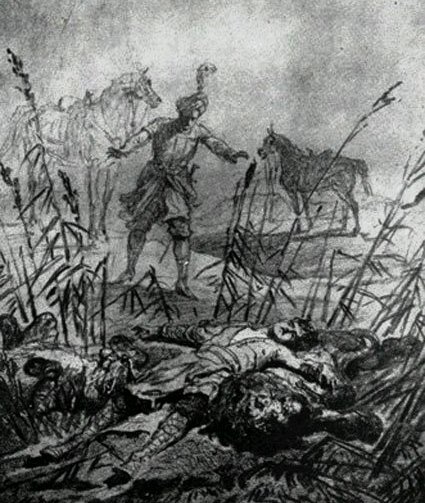 Rustaveli’s characters tend to be various: women, men, kings and queens, masters, vassals, knights, mer-chants, warriors, pirates, viziers and servants. The ideal knights being of the most significant amongst them. They are ideal not only from the “excellence” point of view but also as in terms of being created by the author through the fantasy. These aren’t real-empirical heroes extracted from the reality but rather the characters produced//created through the fantasy of the author, based on conventionality and exaggeration, elevating and rethinking of a human nature, created through the author’s imagination in particular. The best friendly couple, created through the similar artistic style is that of Avtandil and Tariel.
Rustaveli’s characters tend to be various: women, men, kings and queens, masters, vassals, knights, mer-chants, warriors, pirates, viziers and servants. The ideal knights being of the most significant amongst them. They are ideal not only from the “excellence” point of view but also as in terms of being created by the author through the fantasy. These aren’t real-empirical heroes extracted from the reality but rather the characters produced//created through the fantasy of the author, based on conventionality and exaggeration, elevating and rethinking of a human nature, created through the author’s imagination in particular. The best friendly couple, created through the similar artistic style is that of Avtandil and Tariel.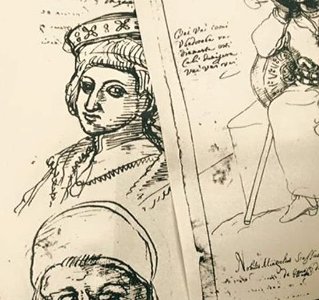 This article aims to analyze and compare the narrative forms of textual and visual works by Cristoforo De Castelli (1600-1659), the Sicilian missionary in Georgia, who left behind rich materials on the 17th century period of that country. The works of Castelli include letters, reports and drawings, created throughout his twenty-five-year stay in Georgia. Sent to Rome as independent compositions the works were collected and organized into seven thematically and chronologically ordered albums by Castelli upon his return to his hometown of Palermo (1656-1658), where the manuscripts are kept today. Other works (letters and reports) are scattered in different archives and libraries in Italy (Rome, Florence and Naples). Yet, as a single narrative it combines Castelli’s life throughout his mission in Georgia with his reflections on the realities of the country.
This article aims to analyze and compare the narrative forms of textual and visual works by Cristoforo De Castelli (1600-1659), the Sicilian missionary in Georgia, who left behind rich materials on the 17th century period of that country. The works of Castelli include letters, reports and drawings, created throughout his twenty-five-year stay in Georgia. Sent to Rome as independent compositions the works were collected and organized into seven thematically and chronologically ordered albums by Castelli upon his return to his hometown of Palermo (1656-1658), where the manuscripts are kept today. Other works (letters and reports) are scattered in different archives and libraries in Italy (Rome, Florence and Naples). Yet, as a single narrative it combines Castelli’s life throughout his mission in Georgia with his reflections on the realities of the country.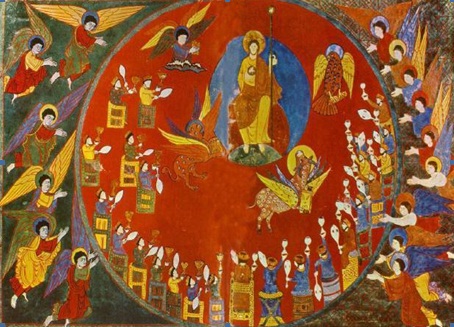 The present paper is an attempt to analyze some samples of Georgian medieval architecture, a small group of monuments which we believe to be outstanding for their facade decoration, i.e. churches built in the 10th-11th centuries, the facades of which are decorated with figurative relief compositions of the Savior’s Glorification, the Second Coming of Christ and Theophany.
The present paper is an attempt to analyze some samples of Georgian medieval architecture, a small group of monuments which we believe to be outstanding for their facade decoration, i.e. churches built in the 10th-11th centuries, the facades of which are decorated with figurative relief compositions of the Savior’s Glorification, the Second Coming of Christ and Theophany.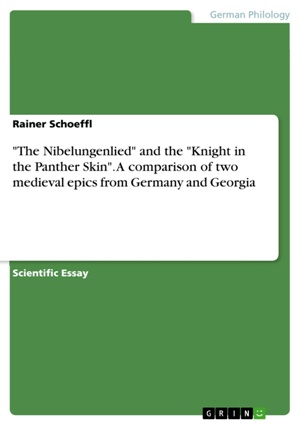 The present paper refers to the most important epics of the High Middle Ages in Germany and Georgia: The Nibelungenlied (NL) and The Man in the Panther Skin (MPS). Both poems were composed around the year 1200 in very similar social envi-ronments (feudal system, court life, chivalry, Christianity), and both were unique secular poetries in those days.
The present paper refers to the most important epics of the High Middle Ages in Germany and Georgia: The Nibelungenlied (NL) and The Man in the Panther Skin (MPS). Both poems were composed around the year 1200 in very similar social envi-ronments (feudal system, court life, chivalry, Christianity), and both were unique secular poetries in those days. 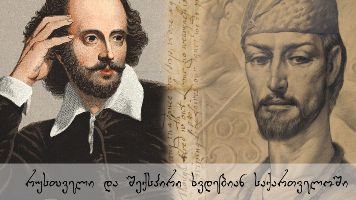 The third period of Shakespeare’s works gives rise to a number of questions, such as what triggers this sudden longing from a dreamlike towards a Utopia like state of mind, perhaps the progression of the author’s life from adolescence to maturity or social and political changes in the country? Is it new literary styles and demands of theatre-goers or all of these together? These questions are actual even in the latest Shakespeare studies. These issues are still important for the latest Shakespearean literary criticism .
The third period of Shakespeare’s works gives rise to a number of questions, such as what triggers this sudden longing from a dreamlike towards a Utopia like state of mind, perhaps the progression of the author’s life from adolescence to maturity or social and political changes in the country? Is it new literary styles and demands of theatre-goers or all of these together? These questions are actual even in the latest Shakespeare studies. These issues are still important for the latest Shakespearean literary criticism .